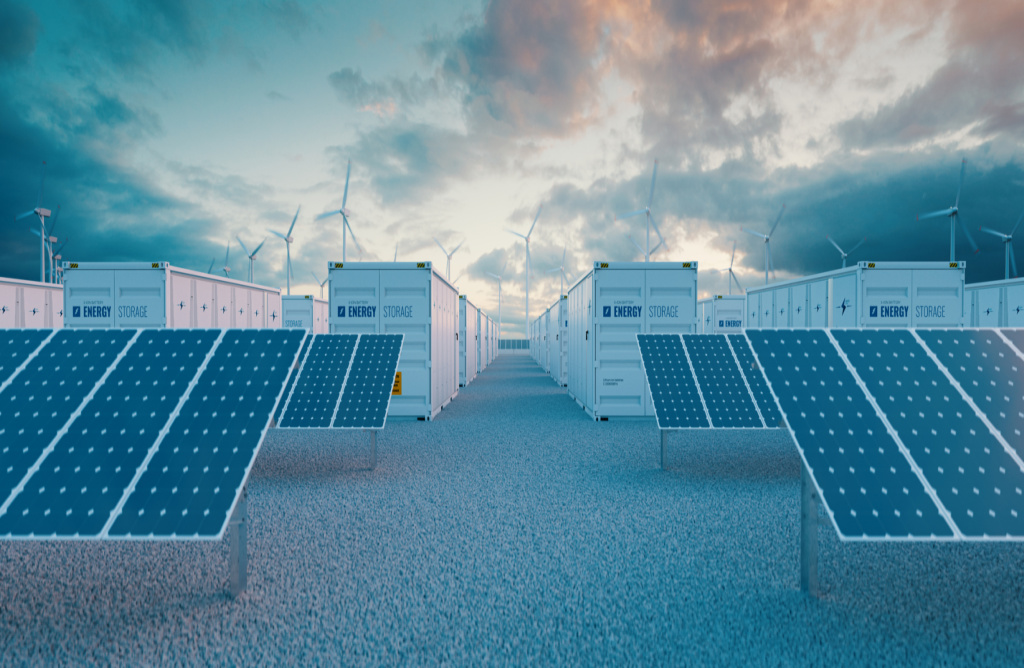The Power system is experiencing a transformation globally with never before seen scale and speed.
New installations of inverter-based resources (IBRs) like wind, solar, and battery energy storage system (BESS) resources are accelerating with increasing fossil fuel plant retirements. In addition to the transition of generation resources, the fundamental behavior of the load and demand for electricity is also changing due to energy efficiency and electrification of traditionally non-electric energy consumption sectors. It’s an effort that hopes to ensure a reduction of greenhouse gas emissions by 2030, to stay on track for limiting temperature increase to 1.5deg C above the pre-industrial level.
Traditionally, inverter-based resources and renewable energy sources (RES) were procured primarily to produce energy, displace fuel, and reduce emissions. Increasing shares of renewable energy resources will make the grid system increasingly reliant on them for stability of the power system as well. As the underlying resource changes, the capacity contribution by PV-Solar is expected to change significantly. Developments to both the resource mix and the load profile are expected to shift risk away from the conventional risk periods such as summer peak in much of the United States, and toward increased winter risk. PV-Solar may shift risk to the evening hours, which reduces the reliability contributions from solar, and increasing contributions from storage, wind, or flexible load resources.
Per the International Energy Association’s (IEA) Renewables Report 2022 renewable energy capacity in the United States is forecasted to increase 75% over 280 GW from 2022 to 2027, with solar PV-Solar and wind accounting for nearly all renewable expansion. This upwards revision of more than 25% from last year’s forecast takes account of new incentives under the IRA, which provides unprecedented long-term policy visibility for multiple technologies. Per the Energy Information Administration (EIA), renewable energy in the U.S. is continuing to march towards being the dominant source of electricity. Solar and wind power are expected to represent 16% of all generation this year.
With positive policy support globally, the momentum of increasing installation of RES is expected to sustain long term. According to one of the recent articles in PV-Tech, 2022 was a massive growth year for PV-module production. Top 10 PV module suppliers shipped >245GW over 75% of global supply. And in the same article they projected these numbers to be around 440GW ±5% for 2023, and even greater for 2024.
Outlook for RES is very positive and expected to grow exponentially with the US federal incentives for solar and wind extended, alongside the new investment tax credit (ITC) for standalone energy storage brought in by the Inflation Reduction Act (IRA) and set to last until 2032. Researchers at BloombergNEF (BNEF) found that the annual global investment in energy transition technologies now exceeds $1.1 trillion, matching fossil fuels for the first time. Per EIA 54.5GW of new utility-scale electric-generating capacity is expected to be added to the US power grid in 2023, in which 54% of this will be solar power and 17% will be battery storage.
Being weather dependent, RES are intermittent in nature and work best when complemented with BESS. In 2023, the BESS capacity is expected to grow by more than double. Developers plan to add 9.4GW to the existing 8.8GW. From 2023 to 2025, it is expected to add another 20.8GW of BESS capacity. BESS projects are becoming increasingly larger in sizes both capacity and in scale. Before 2020, the largest U.S. battery storage project was 40 MW. Developers have scheduled more than 23 large-scale battery projects ranging from 250 MW to 650 MW, to be deployed by 2025.
Enhanced efforts and policy support are helping to speed up the energy transition to RES in the expectation of achieving aggressive targets to curb GHG emissions. Increasing the capacity of utility scale PV-Solar power plant projects seems like an obvious option. Increased shares of RES in the energy mix poses its own challenges due to inherent variability of renewables, potential imbalance in production and demand that will change transmission flow patterns, and possibilities of greater system instability. McKinsey’s report argues that timely development of a long-duration energy-storage (LDES) markets with government support, would enable the energy system to function smoothly with a large share of power coming from renewables and would make a substantial contribution to decarbonizing the economy.
Novel LDES technologies are going to be needed as more renewables are deployed on the grid, which is a primary driver for the increased size of BESS projects as well. LDES technologies are at different levels of maturity and market readiness. They are attracting unprecedented interest from governments, utilities, and transmission operators. The investment in the sector is rising fast: more than five gigawatts (GW) and 65 gigawatt-hours (GWh) of LDES capacity has been announced or is already operational. According to McKinsey’s modeling, by 2040, LDES has the potential to deploy 1.5 to 2.5 terawatts (TW) of power capacity—or eight to 15 times the total energy-storage capacity deployed today—globally. In the United States alone, LDES could reduce the overall cost of achieving a fully decarbonized power system by around $35 billion annually by 2040.
Apart from providing stability to naturally intermittent RES, BESS/LDES can also play a vital role in avoiding large scale curtailments when the production is more than the demand. Curtailments of solar-powered electricity generation has increased in the California Independent System Operator (CAISO). In 2020 and 2021 CAISO curtailed 1.5 million MWh of utility-scale solar, or 5% of its utility-scale solar production. CAISO recently revealed that a total of 2.4TWh of wind and solar production was curtailed over the course of 2022, of which roughly two-thirds occurs in March-May. In the ERCOT grid, with more than 20% of solar generated in April 2022 curtailed as it coincided with relatively high wind generation. Energy curtailed, which otherwise goes wasted, can be utilized for charging the BESS/LDES and this stored energy can be utilized for generating additional revenue for the project.
The transition of power system to RES is inevitable and seems like the main driver for the requirement of newer energy storage technologies options, that will withstand and support the grid system for longer durations and/or multiple days.
Nor-Cal’s team has experience in providing custom on-site SCADA system solutions including Historian, PPC/EMS/MPC, with custom control schemes, and Field Network Communication Enclosures to meet your specific project requirements. We can also provide our preconfigured TAHOETM Meteorological stations with custom selection of sensors and datalogger. Please contact us to discuss the requirements of your existing or upcoming PV-Solar, PV-Solar + BESS or BESS only projects.





